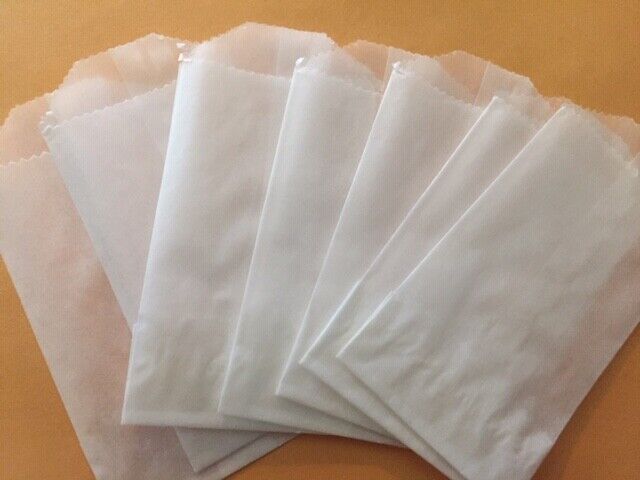In today’s eco-conscious world, the demand for sustainable packaging solutions has skyrocketed. Among the myriad of options available, wax paper bags stand out as a versatile and eco-friendly choice. These bags, crafted from wax-treated paper, offer a multitude of benefits ranging from their natural origins to their recyclability. In this comprehensive article, we delve into the intricacies of wax paper bags, exploring their composition, uses, environmental impact, and future prospects.
The Evolution of Wax Paper Bags
Wax paper bags have a rich history dating back to the 19th century when they were first introduced as a replacement for traditional packaging materials. Initially crafted from wax-coated parchment paper, these bags gained popularity due to their grease-resistant properties, making them ideal for storing food items. Over time, advancements in manufacturing techniques led to the development of more durable and versatile wax paper bags, catering to a wide range of industries including food service, retail, and healthcare.
Composition and Manufacturing Process
Wax paper bags are typically composed of two primary components: paper and wax. The paper used in their construction is often sourced from renewable wood pulp, making it an environmentally friendly choice. The wax coating, derived from natural or synthetic sources, provides the bags with their distinctive properties such as moisture resistance and durability. The manufacturing process involves coating the paper with molten wax, followed by cooling and cutting into the desired bag sizes and shapes.
Applications in Various Industries
Wax paper bags find extensive use across various industries due to their versatility and practicality. In the food industry, they are commonly used for packaging bakery items, sandwiches, snacks, and confectionery products. Their grease-resistant nature makes them an ideal choice for hot and oily foods, ensuring that the packaging remains intact and the contents are fresh. Moreover, wax paper bags are also utilized in retail environments for packaging small items, gifts, and promotional merchandise.
Environmental Impact and Sustainability
One of the key advantages of wax paper bags is their minimal environmental footprint. Unlike plastic bags, which pose a significant threat to the environment due to their non-biodegradable nature, wax paper bags are biodegradable and compostable. This means that they can be easily disposed of without causing harm to the environment. Furthermore, the use of renewable materials in their construction reduces the reliance on finite resources, making wax paper bags a sustainable packaging solution.
Advantages Over Plastic and Other Packaging Materials
Compared to plastic bags and other packaging materials, wax paper bags offer several distinct advantages. Firstly, they are biodegradable and compostable, making them an environmentally friendly choice. Secondly, wax paper bags are grease-resistant, ensuring that the contents remain fresh and the packaging remains intact. Additionally, they can be customized with branding and designs, providing businesses with an opportunity to enhance their brand visibility and appeal to consumers.
Challenges and Limitations
Despite their numerous benefits, wax paper bags are not without their challenges and limitations. One of the primary challenges is the cost associated with their production, as wax paper tends to be more expensive than traditional paper or plastic materials. Moreover, the moisture resistance of wax paper bags may degrade over time, especially when exposed to high temperatures or prolonged storage. Additionally, the availability of wax paper bags in certain regions may be limited, posing logistical challenges for businesses. If you want to know more information about bakery boxes wholesale visit TopUSAPackaging.
Innovations and Future Trends
Innovations in packaging technology are driving the evolution of wax paper bags, making them even more sustainable and functional. One such innovation is the development of bio-based waxes derived from renewable sources such as soybean or palm oil. These bio-based waxes offer similar properties to traditional waxes but with the added benefit of being environmentally friendly. Furthermore, advancements in printing techniques enable businesses to create eye-catching designs and graphics on wax paper bags, enhancing their visual appeal and brand recognition.
In conclusion,
Wax paper bags represent a sustainable and versatile packaging solution that caters to the evolving needs of businesses and consumers alike. Their natural origins, grease-resistant properties, and recyclability make them an attractive choice for a wide range of applications. Despite facing challenges such as cost and availability, wax paper bags continue to gain popularity as businesses strive to adopt more eco-friendly practices. With ongoing innovations and advancements in packaging technology, the future looks promising for wax paper bags as they continue to play a pivotal role in shaping the sustainable packaging landscape.
In a world where environmental consciousness is paramount, wax paper bags emerge as a beacon of sustainability, offering a practical and eco-friendly alternative to traditional packaging materials. As businesses and consumers alike prioritize sustainability in their purchasing decisions, wax paper bags are poised to become increasingly prevalent across various industries, contributing to a greener and more sustainable future.
